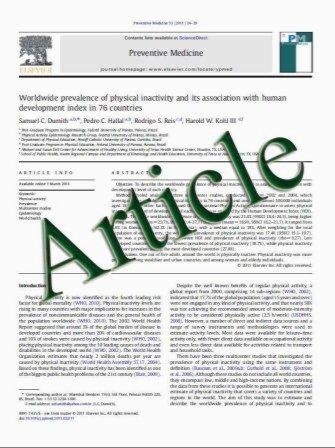Incidence and distribution of occluded culprit arteries and impact of coronary collaterals on outcome in patients with non-ST-segment elevation myocardial infarction and early invasive treatment strategy
- نوع فایل : کتاب
- زبان : انگلیسی
- مؤلف : Philipp Bahrmann Justus Rach Steffen Desch Gerhard C. Schuler Holger Thiele
- چاپ و سال / کشور: 2011
Description
Background It is assumed that patients with non-STelevation myocardial infarctions (NSTEMI) showing an infero- or posterolateral occluded culprit artery (OCA) during diagnostic angiography frequently elude standard 12-lead electrocardiogram diagnosis. In addition, coronary collaterals may have beneficial effects in patients with OCA. Methods We examined 448 consecutive NSTEMI patients within 72 h of symptom onset. All patients underwent early invasive angiography plus optimal medical therapy. We compared clinical characteristics and 30-days/6-month major adverse cardiovascular events (MACE) between patients with OCA and non-OCA. The secondary objective was to investigate the effect of angiographically visible coronary collaterals on 6-month MACE in patients with OCA. Results The angiograms revealed OCA in 130 (29%) of 448 patients. Patients with OCA showed more often inferoor posterolateral lesions (75 vs. 53%, p\0.001) and more collaterals (57 vs. 8%, p\0.001) compared with those with non-OCA. Patients with OCA had larger infarcts (peak CKMB 2.1 ± 2.3 vs. 1.2 ± 1.1 lmol/L/s, p\0.001), lower left ventricular ejection fraction (42 ± 21 vs. 48 ± 20%, p = 0.01), were more often revascularized (89 vs. 78%, p = 0.005), and had higher risk-adjusted 6-month MACE largely driven by its association with non-fatal reinfarctions (HR 2.16, 95% CI 1.04–4.50, p = 0.04). Patients with OCA and angiographically absent collaterals had significantly higher risk-adjusted 6-month MACE than those with OCA and angiographically visible collaterals (HR 1.96, 95% CI 1.02–3.76, p = 0.04). Conclusions Approximately one-fourth of patients with NSTEMI revealed OCA that was more frequently found in coronary arteries supplying the infero- or posterolateral myocardium. Patients with OCA had larger infarcts and more non-fatal reinfarctions than patients with non-OCA. Well-developed collaterals may limit the myocardial damage in these patients
Clin Res Cardiol (2011) 100:457–467 Received: 26 August 2010 / Accepted: 2 December 2010 / Published online: 17 December 2010


